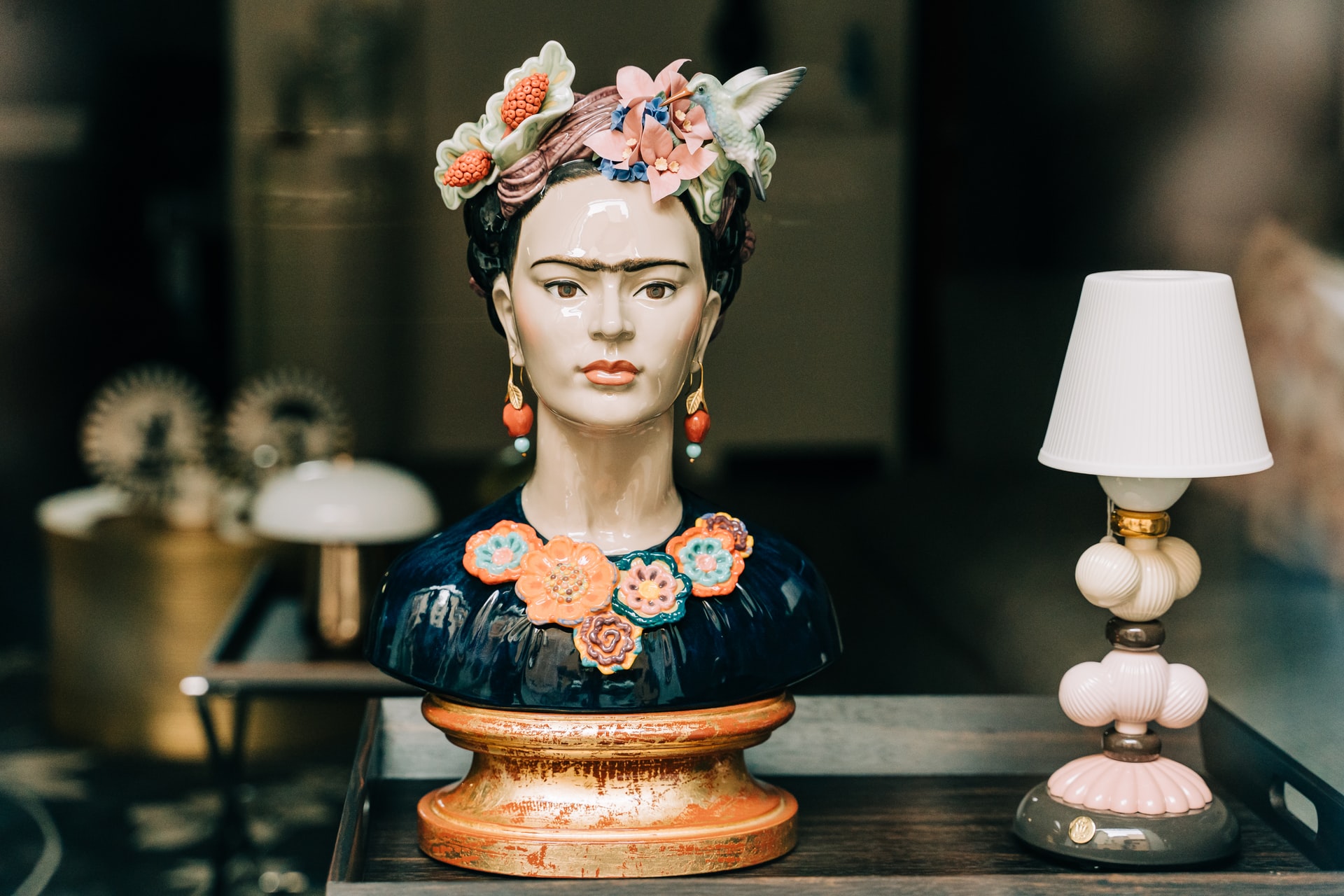by Jay Rafferty

Earlier this year as part of the Sage Talks Interview series Sage Ciggs’ fiction editor LE Francis got the chance to speak with the poet Elisabeth Horan about her latest book at the time (Just to the Right of the Stove) and within the space of only a few months here I am, back with Eli’s work, her 9th book, The Mask. The latest offering from Broken Spine’s ever expanding selection of titles, The Mask is an ekphrastic chapbook in response to the artwork of Frida Kahlo and the follow up to Horan’s earlier collection Self-Insert published by Cephalo. But I can hear you now, “Enough with the publishing details Jay, we wanna know what the poems are like.” Hold your horses reader, I’m getting to it!
The vast majority of the form in this collection is consistent couplet stanzas although quite a few of the poems are indeed freeform and I personally prefer them over the prior. Take for instance the poem (and painting that inspired it) ‘My Dress Hangs Here’. As Kahlo wished to depict the superficiality of American capitalism in her painting, so too does Horan wish to display the voracious commodification of the of people by the US, whether that be the consumption of their heritage or their own bodies, as Horan’s speaker (who we can only assume is Kahlo herself) states “I would watch the men bring the parts of my ancestors // into the backdoor of el resturante.” Kahlo in this poem comments and, at parts, satirizes the reduction of people to parts, whether it be offal, sexual organs, clothes or nationality. This an unflinching poem about how much of one may be taken by the people, the city, the commerce around them.
In contrast let’s look at one of the consistent couplet poems, namely ‘Nude with Beads’ which features Kahlo but is not by her. José Diego María Rivera’s portrait of Frida Kahlo is tender and sparse, devoid of colour or great detail, indeed the artist even strived to omit his wife’s withered leg, injured as it was in a streetcar accident and withered by polio. Horan, assuming the voice of this artist, presents the poem in simplistic language, reminiscent of the sparce background detail of the painting. The poet uses lovey dovey metaphors which could be considered cliché: “You are my sun – Rainbow – // Storm.” Is this sincerity from Horan’s Lyric I or another commentary on the superficiality so often imposed on women? Kahlo here is not the artist, the thinker, the person. She is reduced by having her form stripped of imperfection (“unfortunate deformation of your right foot.”) She becomes in essence the focus of the poem, the object, the Lyric I’s property as she is reimagined by the artist. Or am I wrong? Am I misreading the poem entirely? This is why I don’t write essays about living writers. If this was a Yeats review I could be talking out my ass and probably get it right by accident. I digress.
Having heard Horan’s work performed at open mics and having read her work in preparation for her interview with Le I had an idea of what to expect going into this book; Sometimes lithe, often fierce but always passionate poetry. It is the kind of layered complexities and motivations in Horan’s speakers that I discussed that have me returning again and again to Eli’s work, to The Mask and, by extension, to Frida Kahlo.
Jay Rafferty is an uncle, an Irishman and an eejit. He’s the Social Media Manager for Sage Cigarettes Magazine and a Best of the Net Nominee. His debut chapbook Holy Things is set to be published in early 2022. You can read his poems in several journals including Lights on the Horizon and Daily Drunk Magazine. When not playing games of pool he, sometimes, writes stuff. You can follow him on Twitter @Atlas_Snow.



Add your first comment to this post